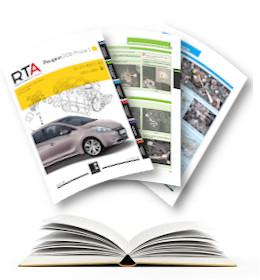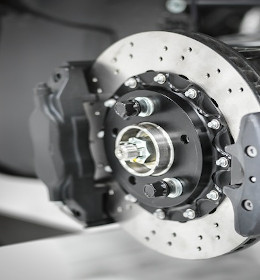Que signifie votre code Code Défaut AUDI ?
Grace au système OBD, les
Audi
fabriqués après 1996 sont normalement équipés d'une prise diagnostique OBD.
Si l'ordinateur de la voiture rencontre un problème,un code d'erreur ou un code de diagnostic (DTC)
sera stocké dans la mémoire de l'ECU de la voiture.
Avec un lecteur OBD branché sur le port OBD (On-Board Diagnostics) de la voiture, vous pouvez lire la liste des codes stockés, et donc découvrir quel est le problème.
Les codes suivent une formule permettant de savoir généralement quel est le problème avant même de regarder le tableau ci-dessous.
Nous vous présentons ci-dessus une liste très complète des différents codes défauts possibles.
Si le code défaut de votre auto s'affiche au tableau de bord, vous n'aurez peut-être même pas besoin d'un lecteur OBD . il sera dans la liste .
Réparer le code défaut de votre auto, c'est potentiellement simple à faire avec vos revues et méthodes techniques.

Réparer le code défaut de votre auto, c’est potentiellement simple à faire avec nos revues et méthodes techniques
| Code | Libellé |
|---|---|
| P164D | Engine oil pressure switch - malfunction |
| P164E | Oil pressure control valve circuit/open |
| P1650 | Lost communication with the instrument panel cluster (IPC) control unit |
| P1651 | High-speed CAN communication bus performance |
| P1652 | (Semi-)automatic transmission control unit |
| P1653 | ABS control unit |
| P1654 | Control panel control unit |
| P1655 | Cruise control front distance range sensor |
| P1656 | Air-conditioning compressor clutch relay control circuit low |
| P1657 | Air-conditioning compressor clutch relay control circuit high |
| P1658 | Invalid data received from the cruise control front distance range sensor |
| P1659 | Fan 1 control circuit high |
| P165D | AC refrigerant pressure sensor - pressure too high |
| P165E | AC refrigerant pressure sensor - pressure too low |
| P165F | Engine oil pressure control valve - short circuit to earth |
| P1660 | Fan 1 control circuit low |
| P1661 | Fan 2 control circuit high |
| P1662 | Fan 2 control circuit low |
| P1663 | Injector circuit/open |
| P1664 | Injector circuit/open |
| P1665 | Injector circuit/open |
| P1666 | Injector 1 circuit/open |
| P1667 | Injector 2 circuit/open |
| P1668 | Injector 3 circuit/open |
| P1669 | Injector 4 circuit/open |
| P166A | Engine oil temperature sensor - malfunction |
| P166B | Engine oil temperature sensor - short to earth |
| P166C | Engine oil temperature sensor - implausible signal |
| P166D | Engine control module (ECM) - incorrect installation |
| P1670 | Injector 5 circuit/open |
| P1671 | Injector 6 circuit/open |
| P1672 | Fan 1 control circuit/open |
| P1673 | Vehicle speed sensor signal circuit/open |
| P1674 | CAN system, incorrect signal from the control panel control unit |
| P1675 | CAN system, implausible message from the injection pump |
| P1676 | Drive-by-wire MIL circuit/open |
| P1677 | Drive-by-wire MIL circuit high |
| P1678 | Drive-by-wire MIL circuit low |
| P1679 | Drive-by-wire MIL circuit/open |
| P167E | The ECO start/stop function has a malfunction. The maximum number of operating cycles has been exceeded |
| P1680 | Limp home mode activated |
| P1681 | Engine control unit programming fault |
| P1682 | CAN system, incorrect signal from the ABS control unit |
| P1683 | CAN system, incorrect signal from the airbag control unit |
| P1684 | Control unit programming, communication fault |
| P1685 | Invalid data received from the steering angle sensor |
| P1686 | Control unit programming, communication fault |
| P1687 | Invalid data received from the heating, ventilation and air conditioning (HVAC) control unit |
| P1688 | Invalid data received from the 4WD clutch control unit |
| P1689 | Invalid data received from the body control unit |
| P168B | Engine oil pressure switch 3 - implausible signal |
| P168C | Engine oil pressure switch 3 - implausible signal |
| P168D | Engine oil pressure switch 3 - malfunction |
| P1690 | Malfunction indicator light (MIL) circuit/open |
| P1691 | Malfunction indicator light (MIL) circuit/open |
| P1692 | Malfunction indicator light (MIL) circuit low |
| P1693 | Malfunction indicator light (MIL) circuit high |
| P1694 | Malfunction indicator light (MIL) circuit low |
| P1696 | CAN system, incorrect signal from the steering control unit |
| P1697 | Steering angle sensor circuit/open |
| P1698 | Steering column electronics unit |
| P1699 | Lost communication with the steering column electronics unit |
| P16B3 | Intercooler coolant pump 2 - open circuit |
| P16B4 | Intercooler coolant pump 2 - short circuit to earth |
| P16B5 | Intercooler coolant pump 2 - short circuit to positive |
| P16B6 | Intercooler coolant pump 2 - temperature shut-off |
| P16B8 | Intercooler coolant pump 2 - mechanical malfunction |
| P16B9 | Intercooler coolant pump 2 - dry running |
| P16BA | Intercooler coolant pump - dry running |
| P16BB | Coolant pump 3 - open circuit |
| P16BC | Coolant pump 3 - short circuit to earth |
| P16BD | Coolant pump 3 - short circuit to positive |
| P16C1 | Engine control module (ECM) / Transmission control module (TCM) - internal temperature too high |
| P1700 | Brake pressure switch, implausible signal |
| P1701 | Transmission control unit blocked |
| P1704 | Kickdown switch circuit/open |
| P1706 | Communication fault |
| P1707 | Transmission control system, electrical fault |
| P1708 | Engine control module (ECM) 1 & 2 - transposed |
| P1711 | Front left wheel speed sensor circuit/open |
| P1712 | Transmission Fluid Temperature Sensor (G93), signaal te sterk |
| P1713 | Transmission Fluid Temperature Sensor (G93), signaal te zwak |
| P1716 | Front right wheel speed sensor circuit/open |
| P1718 | Transmission Fluid Temperature Sensor In Range Failure (> 250°F) |
| P171E | Transmission input shaft speed sensor 2 - no signal |
| P171F | Transmission input shaft speed sensor 2 - implausible signal |
| P1720 | Gearbox output shaft speed sensor 1 circuit, implausible signal |
| P1720 | Transmission output shaft speed sensor 1 - implausible signal |
| P1721 | Rear left wheel speed sensor circuit/open |
| P1722 | Transmission output shaft speed sensor 2 - implausible signal |
| P1723 | Starter disable circuit/open |
| P1724 | Starter disable circuit low |
| P1726 | Rear right wheel speed sensor, incorrect signal |
| P1728 | Wheel speed sensor circuit/open |
| P1729 | Starter disable circuit high |
| P172F | Transmission gear position sensor 1 - malfunction |
| P1733 | Transmission gear selector, switch down circuit low |
| P1737 | Transmission fluid pressure sensor/switch 1 circuit high |
| P1738 | Transmission fluid pressure sensor/switch 2 circuit high |
| P1739 | Transmission gear selector, switch up circuit low |
DEFINISSEZ VOTRE MARQUE POUR ACCEDER A VOS CODES DEFAUTS
-
Revue technique RTA

Revue Technique Automobile
La revue technique de référence depuis 1946. La RTA est une revue papier pour tous publics, qui vous permet d'effectuer les petites et les grosses réparations
 Voir le descriptif
Voir le descriptif
-
Entretien courant MTA

Méthode Technique Automobile
La MTA est issue de nos outils destinés aux pros de l'auto. Ces méthodes en ligne permettent d'effectuer les opérations de maintenances de votre auto (filtres, courroies, etc.)
 Voir le descriptif
Voir le descriptif
-
Toutes réparations MTAx

Méthode Technique Automobile Expert
La MTA expert est un outil en ligne destiné aux experts en mécanique et en carrosserie, pour effectuer tous types de réparations sur une voiture.
 Voir le descriptif
Voir le descriptif















